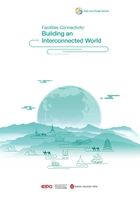
I. Present Infrastructure Situation Along the Belt and Road
1. Why is infrastructure so important?
Infrastructure plays a vital supporting role in a country’s normal economic and social functions. Economically, “each industrial structure requires corresponding soft and hard infrastructures to facilitate its operations and transactions.”(1) Thus, the cost of market transactions can be reduced by improving infrastructure, so raising the level of economic development. Chinese people are familiar with this principle. The concept – “better roads lead to a better life” – is deeply rooted among the people due to the vigorous reform and opening-up drive. Shortly after World War II, infrastructure was indeed the focus of Western aid. For example, the Kariba Hydropower Station and other facilities in Zambia provided strong support for the initial development of newly independent African states. However, developing countries were not able either to raise the immense funds or supply the specialized technologies needed to build the infrastructure they needed. Nor could Western countries support these projects, valued at hundreds of millions of US dollars, through non-reimbursable assistance. Eventually, these developing countries opted for loans. Repayments however, exerted great pressure on these nations, leading to a number of international debt crises in the 1980s and 1990s which further inhibited the interest of developed countries in investing in them. At the beginning of the 1990s, the evolution of the economic structure of developed industrial countries caused a gradual decrease in the proportion of secondary industry in their industrial structure, and a rapid increase in that of their tertiary industry. Consequently these countries gradually lost the motivation to transfer their construction and industrial capacity through international cooperation. This brought about the gradual appearance of a serious infrastructure“deficit” in the majority of developing countries and regions which not only constrained economic growth but also hindered improvements to people’s living standards.